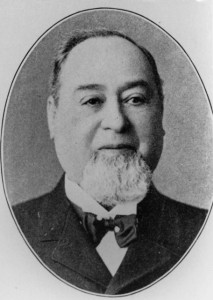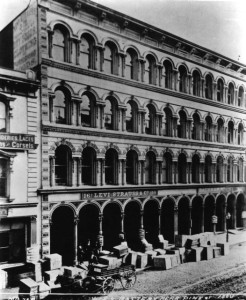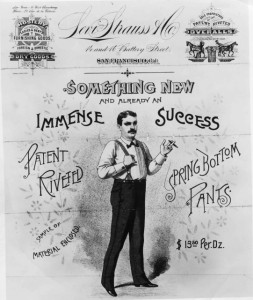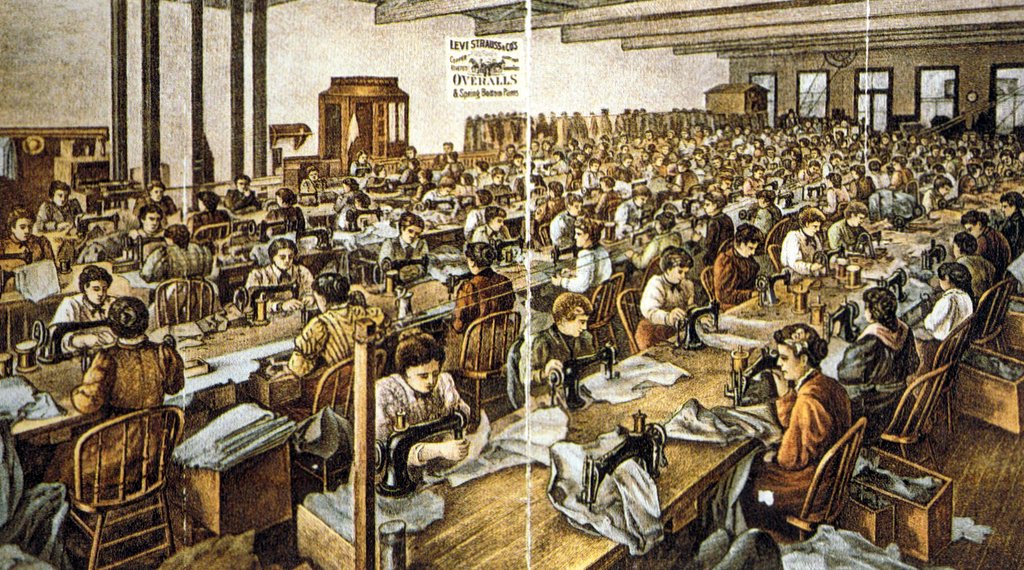Levi Strauss
Values Codes I – H – E – L – P
Levi Strauss was born Löb Strauß in Buttenheim, Bavaria in 1829.
Levi (Lob) Strauss and his mother, Rebecca, arrived in New York in 1848, where he was reunited with his step-bothers Jonas and Louis, who operated a large dry goods business, J. Strauss & Bro.
Fanny Strauss, Levi’s sister, who arrived with Levi and his mother at the same time, married David Stern in 1850.
San Francisco
Levi Strauss became a U. S. Citizen in New York in 1853, and soon after traveled to San Francisco, probably by way of the Isthmus of Panama.
Shortly after he arrived in San Francisco, shipments of merchandise began arriving from his brothers in New York, and continued to arrive on a regular basis for years.
This kept Levi Strauss’ wholesale establishment fully stocked with dry goods at all times.
Contrary to legend, Levi Strauss did not sell canvas, and he did not make pants from canvas.
He sold dry goods and clothing to retailers all over Northern California, Gold Country, Nevada, and even Hawaii.
Louis Strauss, Fanny, and her husband David Stern, moved to San Francisco in 1855.
Jonas Strauss remained with his family in New York City.
David Stern joined Levi Strauss, and together they “built the business.”
David Stern took care of the day-to-day business while Levi Strauss was the sales manager and made the “connections.”
In 1860, the business became Levi Strauss & Co.
Jacob Davis (Youphes), a Jewish tailor in Nevada, bought fabric from Levi Strauss & Co.
He made horse blankets, tents, and wagon covers, affixing copper rivets at stress points to avoid tearing.
A woman complained to him that her husband’s pockets in his work pants kept tearing. Jacob Davis tried using his rivets on the pockets, thus revolutionizing work pants. Other local tailors started doing the same.
In 1872, Davis wrote to Levi Strauss suggesting that they apply for a patent.
U.S. Patent #139,121 was granted in 1873 to Levi Strauss & Co. and Jacob Davis.
Levi Strauss hired Jacob Davis and moved his family to San Francisco, where he was put in charge of overseeing the production of “copper riveted waist overalls” at Levi Strauss & Co. Davis was made a partner in the business.
The now-famous 501 jeans were known at the time as the “XX.”
Levi Strauss’ sister, Mary, had married William Sahlein in 1849 and worked with the New York firm.
In 1874, they traveled to San Francisco to help Fanny’s husband, David Stern, who was in poor health.
David Stern died in 1875.
J. Strauss Bro. & Co. in New York and Levi Strauss & Co. in San Francisco coexisted, shared products, and were owned by the same people.
In 1890 Levi Strauss incorporated Levi Strauss & Co. Inc. with the State of California.
He kept 55% of his shares and divided the rest among his four nephews, who ran the company well into the twentieth century.
Community
Levi Strauss and David Stern helped fund the building of Congregation Emanu-El, of which they were members.
Strauss also helped fund the Pacific Hebrew Orphans’ Asylum and Home, Eureka Benevolent Society, Hebrew Board of Relief, Home for Aged Israelites, as well as both the Catholic and Protestant Orphan Asylums.
Levi Strauss also helped purchase land for Congregation Emanu-El’s new cemetery in Colma, south of San Francisco.
Levi Strauss died in 1902. He is probably the best-known Jewish Pioneer of the American Wild West.
Sources
- Norton B. Stern and William M. Kramer, “Levi Strauss: The Man Behind the Myth,” Western States Jewish History 19/3.
- John Michael, “Levi Strauss: The Man – Without All the Myths,” Western States Jewish History 45/3.
Most early materials of the Strauss and Stern families were destroyed in the 1906 San Francisco Earthquake-Fire.
John D. Michael is curator of this Levi Strauss exhibit.




